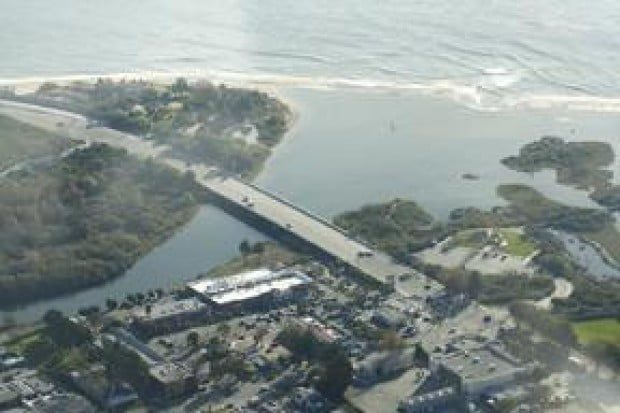
Malibu and other nearby cities are closely watching the implementation of new water quality standards for the Malibu Creek Watershed, adopted by the Environmental Protection Agency on July 2, which could compel municipalities to spend more on expensive public works projects to further clean their waterways.
The new standards set benchmarks on natural pollutants that currently produce excess algae growth. The Los Angeles Regional Water Quality Control Board is now formulating an implementation plan to reach the benchmarks, which could include new regulations
The pollutants, which include excess sediments and the nutrients phosphorus and nitrogen, promote excess algae growth and upset the balance of Malibu Creek and Lagoon, according to the EPA.
The Malibu watershed was listed impaired by the State of California.
“Because it goes on the list, it means that a Total Maximum Daily Load (TMDL) is required in order to address those impairments,” said Janet Hashimoto, manager of the EPA’s Standards and TMDL Office.
A TMDL is a target number of pollutants that a water body can withstand, Hashimoto said.
Craig George, environmental sustainability department manager for the City of Malibu, said Malibu is waiting for an implementation plan to come from the Los Angeles Regional Water Quality Control Board.
The plan will divide responsibility for the new regulations among cities along the watershed.
“How they’re going to monitor, what they require, who they assign load allocations to,” he said.
The cost of the plan and what entities are responsible for controlling pollutant levels will be determined by the plan.
“They have stated that they are working on it,” George said.
Samuel Unger, executive officer of the Los Angeles Regional Water Quality Control Board, said they don’t know yet if there will be any changes to current watershed management programs.
“We expect to have a public draft summer of 2014,” he said.
In the case of the Malibu Watershed, the pollutants were determined to be sediments and nutrients that were increasing the growth of algae.
“All of this is natural,” Hashimoto said. “These are not chemicals that are manmade, like pesticides.”
“Too much algae means that it’s taking up all of the nutrients as well as the oxygen from other organisms.”
Benthic macroinvertebrates— bugs in the water—were being stressed by the algae growth, Hashimoto said.
Too much of one organism and not enough of another can be an indication of an unhealthy water system. The goal of the TMDL is to reset a healthy balance for the watershed compared to similar water systems.
“Trying to find the right balance for this system, what would be OK, is what we’re trying to achieve here,” Hashimoto said.
TMDLs are not regulations, they are recommendations, Hashimoto said.
“A TMDL is not self regulatory,” she said. “It has no enforceability.”
TMDLs are enforced by regulations that are generally set by the regional water board, she said.
How the regional board comes to enforce the regulations and meet the benchmark set by the EPA will be closely watched by cities such as Malibu, which has spent more than $60 million on public works projects in the last decade to clean its waterways, and has a wastewater treatment facility slated for completion by 2015.
Dennis Washburn, chairman of the Malibu Creek Watershed Council, said he hopes the board will consider other methods of limiting algae, like creating more shade in places where algae grows or simply altering human behavior to stop pollutants locally.
“You need to say it’s not just about what’s feasible or plausible or commendable, but what’s affordable over what amount of time,” Washburn said. “That’s the difficulty of dealing with it from a pollution standpoint alone.”
Allocating responsibility for TMDLs between the various interests involved, which could include cities, the Tapia Water Reclamation Facility and owners of septic systems by the coast, could prove very tricky, Washburn said.
“If you try and break this up into constituent elements, you have to determine what [the water board is] addressing in order to meet a very complex set of directions,” he said.